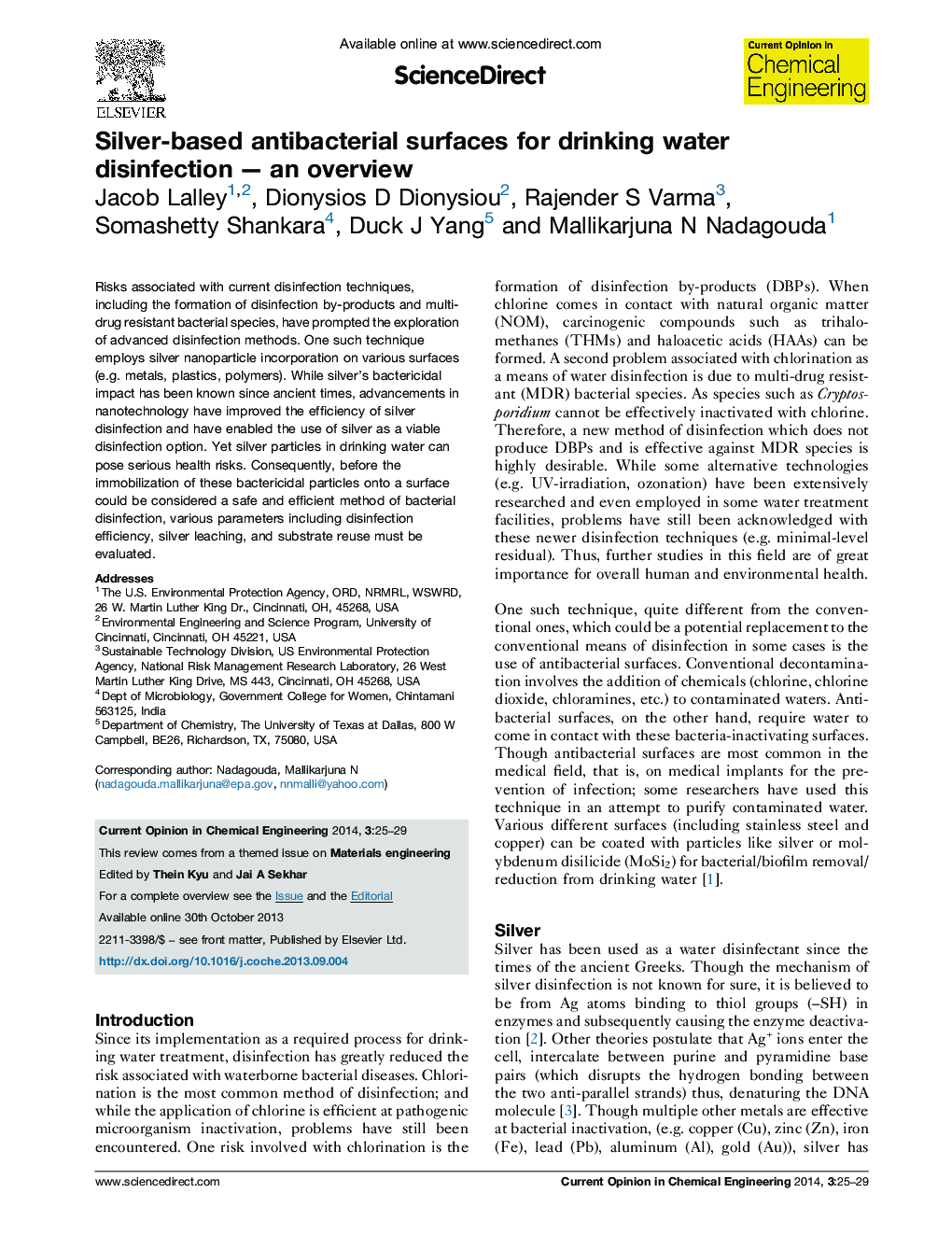| Article ID | Journal | Published Year | Pages | File Type |
|---|---|---|---|---|
| 174607 | Current Opinion in Chemical Engineering | 2014 | 5 Pages |
•The use of nano-sized silver as drinking water disinfectant.•Immobilization of silver nanoparticles onto various surfaces.•Problems associated with silver disinfection including particle leaching.•Water disinfection.
Risks associated with current disinfection techniques, including the formation of disinfection by-products and multi-drug resistant bacterial species, have prompted the exploration of advanced disinfection methods. One such technique employs silver nanoparticle incorporation on various surfaces (e.g. metals, plastics, polymers). While silver's bactericidal impact has been known since ancient times, advancements in nanotechnology have improved the efficiency of silver disinfection and have enabled the use of silver as a viable disinfection option. Yet silver particles in drinking water can pose serious health risks. Consequently, before the immobilization of these bactericidal particles onto a surface could be considered a safe and efficient method of bacterial disinfection, various parameters including disinfection efficiency, silver leaching, and substrate reuse must be evaluated.
Graphical abstractFigure optionsDownload full-size imageDownload as PowerPoint slide
